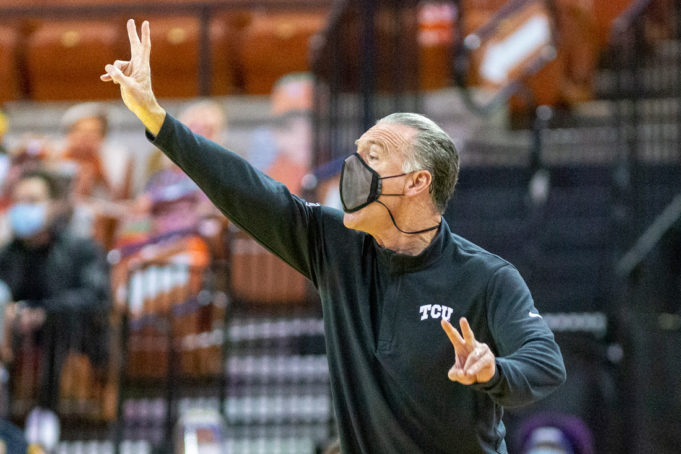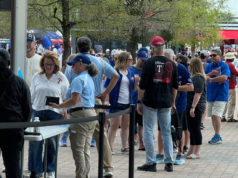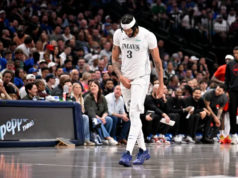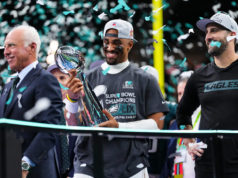Texans are accustomed to wild daily fluctuations in weather, but the athletic climate at TCU is consistent hot-coach seats as of late. Both Gary Patterson and Jim Schlossnagle, long tenured and successful coaches of football and baseball, respectively, are gone. Neither of these men were “fired,” but after numerous successful seasons and a culture of achievement, their teams grew stale, and administration decided it was in everyone’s best interest to infuse new purple blood to lead those previously dominant teams. Jamie Dixon has been a more competitive hardwood general than any other Frog basketball coach this century, but don’t think for a second he’s immune from being sent the long way down Berry Street.
Frog hoops fans need to dust off the archived game books to discover the last coach who led the purple dribblers to more than one NCAA tournament appearance. Johnny Swaim in the late ’60s and early ’70s managed two invitations, the latter of which the best finish ever for our Fort Worth hoopers whose Cinderella season ended against Houston during the Elite Eight. Swaim’s predecessor, Buster Brannon, was an intermittent force in the old Southwest Conference, topping the league’s standings four times and leading his squad to three Sweet-16 appearances, not including his successful tenure with the Rice Owls before returning to the Fort. Brannon coached for 19 seasons and is unequivocally the most successful hoop commander in Frog history. Like Dixon, Brannon is a Frog alumnus, but Buster is a level of TCU royalty not attainable for anyone in modern sports, as he was a multi-year starter in both football and basketball as a player and worked as an assistant football coach under gridiron great Dutch Meyer during the fall. Granted, his resume can’t be replicated because the very nature of college sports then and now is about as similar as a Ford Model T and a Tesla.
Considering the aforementioned, Dixon has still had a hell of a run reviving a program that was as dead during basketball season as Kansas is during football season. Dixon led TCU to the tournament once, and though expectations have been far from met by modern sports fan standards, he’s grinding through a season that is markedly better than his last two. The sticking point for modern purple hoops is the back half of the conference schedule (Big 12 basketball teams play each of their conference opponents twice, spaced throughout the slate), and this one has been no different. No one likes to be average, especially in sports and definitely not in Texas. This team isn’t, but “healthily above average” is the most apt descriptor I can muster, and that’s going to have to be good enough for now.
Truthfully, average is 100% better than Frog hoops were projected to be. Mike Miles (#1) was the only notable returning contributor on a squad composed of role-playing upperclassmen and portal pickups. Miles has been hurt in some fashion since the opening conference tip against Baylor. Most of the hot hands this season are new to the lineup, but fans are understandably excited about them. The ability of Dixon to Flip or Flop this team into a contentious middle-tier spoiler shouldn’t be discounted. The Frogs have reached a pair of playing milestones this season: holding Iowa State to their lowest home-scoring total — ever — and sweeping the Oklahoma Sooners where no Horned Frog had ever walked off the court victorious before, in Norman.
Still, the Frogs aren’t flirting with the top tier. The best four conference squads — who have been identified as belonging to the Top 16 teams in early tournament rankings — are Kansas, Baylor, Tech, and Texas, written from the top to reflect the conference standings today. TCU has yet to play the Jayhawks because their early game was relegated to the end of the season (thanks, COVID), and since the Frogs have lost handily to each of the others, they are likely to keep doing so.
The good news for fans — and Dixon, as it were — is that right now TCU is expected to receive a tournament invite. Consensus bracketology is estimating the Frogs a 10-seed — fashionably late to the big dance — but there’s still work to do. A recent three-game skid hasn’t helped their cause (though they weren’t “supposed” to win any of those games). TCU is sitting fifth in the murderous Big 12 tied in win total with both Kansas State and Okie State, who are each 1-1 against the Frogs. The standings benefit TCU right now because they’ve played fewer games — and have aggregated fewer losses — against the top teams, which are coming soon. The final two weeks of conference tips are daunting, but the Froggies took care of business on Monday during their first matchup of the season with the last-place Mountaineers. They’ll visit Morgantown a week from this Saturday during the regular season finale, but in between they’ll have to play UT and Tech, followed by two consecutive games against Kansas in a three-day span.
While their remaining schedule is a gauntlet, it also provides upset opportunities for Dixon to improve his team’s NCAA Evaluation Tool (NET) ranking, which is currently 56th. One of the major factors in determining a team’s NET is their record in four separate quadrants. TCU’s win over West Virginia was essential because it represented the final game of the season outside of Quadrant 1. Monday’s game against WVU (NET ranked 69) was Quadrant 2 because it was played in Schollmaier Arena. If the rankings stay stable, when the Frogs visit Morgantown, it will be considered a Quadrant 1 game because the Mountaineers are ranked above 75th and are hosting the contest. All the other Frog opponents are Quad 1 no matter where the game is played. The dribbling disciples currently have four wins in the top quadrant, a winning record in Quad 2, and are undefeated in the lower two. Sweeping the series against West Virginia at the end of next week, even while losing four games in between, could be enough to sneak the purplers into the tournament. If the good guys are able to upset one of the conference big dogs in between, a dance invite is almost guaranteed.
The bad news for Dixon is that, even if TCU gains a tournament invite, he’s the second highest paid coach in the conference. Being generously compensated may not sound like a bad shtick, but paying the ultimate prices for finishing anywhere from fifth to seventh in a conference doesn’t require an overpriced business degree to understand an imbalanced return on investment. Dixon’s contract runs through the ’23-’24 season, and his extension arrived following the UCLA Bruins trying to lure the native Californian back to the Left Coast. Collecting a second tournament invite, coupled with rebuilding the majority of his roster in one season, are his most effective staying points for remaining the head honcho at TCU after his prominent peers have been replaced.












